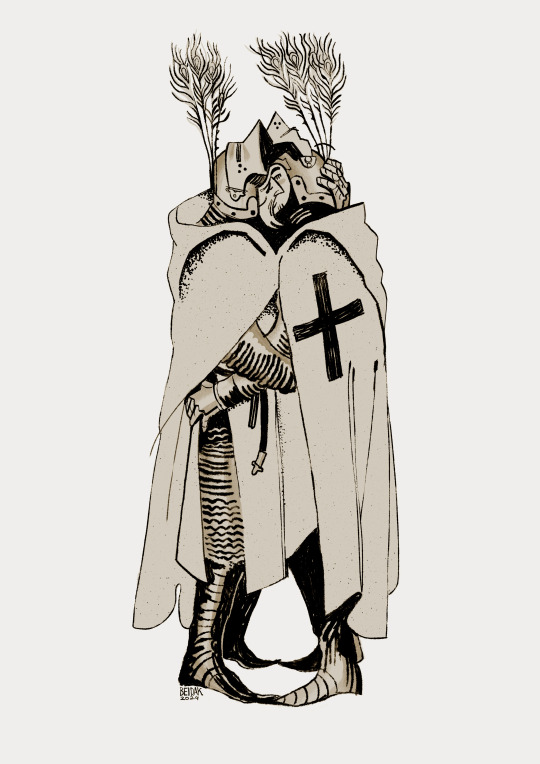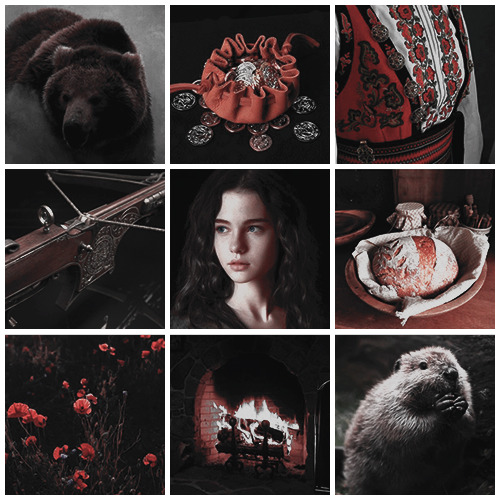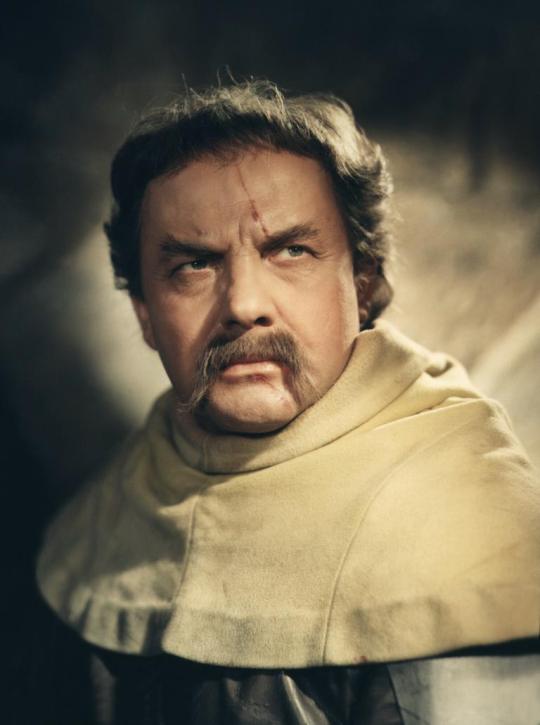#krzyżacy
Explore tagged Tumblr posts
Text

they were confreres in christ
16K notes
·
View notes
Text
My brain for the last few days imagines russingon but it is XV century Poland, so basically the Silmarillion and the Knights of the Cross by Sienkiewicz crossover. At this point I start to question my sanity. Did I make an unholy amount of research in pursuit of this idea? Yes. Do I regret it? Not really.
I already did russingon in resovian folk costumes so yeah...
#tolkien shitpost#silmarillion#krzyżacy#i didnt suspect i would ever use that tag xd#russingon#tolkien fanfiction#what am i doin with my life#maedhros#fingon
20 notes
·
View notes
Text
Pics that go hard

24 notes
·
View notes
Text

PL:
Zamek krzyżacki, Malbork, Polska
Zamek w Malborku pełen jest legend i tajemnic. Jedną z najbardziej znanych jest historia Marii z Brzozowej, która miała rzekomo zostać zamurowana żywcem w jednej z komnat zamku. Według innej legendy, pod zamkiem miała znajdować się kryjówka, która skrywa skarby Zakonu Krzyżackiego. Oczywiście, nie ma potwierdzenia, że te historie są prawdziwe, ale to właśnie one sprawiają, że Malbork jest jeszcze bardziej tajemniczym i intrygującym miejscem.
EN:
Castle of the Teutonic Order, Malbork, Poland
Malbork Castle is full of legends and mysteries. One of the most famous is the story of Maria of Brzozowa, who was supposedly bricked up alive in one of the castle's chambers. According to another legend, there was supposed to be a place under the castle that conceals the treasures of the Teutonic Order. Of course, there is no confirmation that these stories are true, but they are what make Malbork an even more mysterious and intriguing place.
#malbork#zamek#castle#poland#polska#architecture#architektura#widok#landscape#historia#history#gothicarchitecture#gothic architecture#architekturagotycka#architektura gotycka#krajobraz#krzyżacy#zakon krzyżacki#teutonic order#teutonic knights#teutonicorder
3 notes
·
View notes
Photo

One hell of a nostalgic piece for my @beidak-art 💛
68 notes
·
View notes
Text

I just cant explain how i love loona
whole concept, music, subunits, colors, theories its make me so AHHH >w<
i wish they will comeback as 12
#loona kpop#loona 1/3#loona yyxy#loona#loona odd eye circle#loona ot12#orbit#orbitloona#kpop icons#kpop gg#chuu loona#yves#yves loona#loosemble#artms#kpop#kpop idols#kpop aesthetic#krzyżacy#hehe#stan loona#stan artms#stan loossemble#viralpost#loona kim lip#loona hyunjin#loona haseul#loona hyeju#loona wallpaper#loona the world
5 notes
·
View notes
Text


#star wars#bb8 x bb9e#krzyżacy#polish literature#polish movies and series#literature#movies and series#poland#bb8#bb9e#tumblr games#the one true ultimate shipping tournament
7 notes
·
View notes
Text

𝓙𝓪𝓰𝓲𝓮𝓷𝓴𝓪 𝓸𝓯 𝓩𝓰𝓸𝓻𝔃𝓮𝓵𝓲𝓬𝓮
("𝚃𝚑𝚎 𝙺𝚗𝚒𝚐𝚑𝚝𝚜 𝚘𝚏 𝚝𝚑𝚎 𝙲𝚛𝚘𝚜𝚜" 𝚋𝚢 𝙷𝚎𝚗𝚛𝚢𝚔 𝚂𝚒𝚎𝚗𝚔𝚒𝚎𝚠𝚒𝚌𝚣)
#Jagienka#The Knights of the Cross#The Teutonic Knights#Henryk Sienkiewicz#Krzyżacy#polish literature#medieval history#medieval#powieść historyczna#Jagienka ze Zgorzelic#Jagienka of Zgorzelice#szlachta#Poland#Polska#literature#novel
5 notes
·
View notes
Text

2 notes
·
View notes
Text

sleepless night
#ugghhh I sketched it like 1000 years ago#but had no space to finish it until this evening#bruh#drawing something personal with a BACKGROUND??#I'd never#yet here I am#I'm very happy I could take some reference photos at Malbork Castle couple of months ago#so these frescoes are based on the real ones in grand master's bedroom and are not some random ones :']#ulrich von jungingen#krzyżacy#knights of the cross#artists on tumblr#art#digital art#illustration#medieval
7K notes
·
View notes
Text
This one
youtube
please do look it up if you dont know the date bc there may be at least an approximate answer and otherwise the last option will completely dominate and this poll will be boring.
and dont be like 'but i cant sing'... just answer the earliest tune you know well enough that you COULD sing it
periods of western classical music provided only for reference
14K notes
·
View notes
Text

Classic Polish movie posters - KRZYŻACY (Knights of the Teutonic Order)
Directed by: Aleksander Ford (1960)
#krzyżacy#teutonic knights#knights of the teutonic order#battle of grunwald#aleksander ford#henryk sienkiewicz#poland#polska#Polish film poster#Polish movie poster#film poster#movie poster#poster#roman cieślewicz#film#movie#1960s#1960
2 notes
·
View notes
Text

PL:
Zamek krzyżacki, Malbork, Polska
Dlaczego zamek jest "naj"?
1) Największy zamek z cegły na świecie - twierdza tak warowna, że nigdy nie zdobyta w sposób militarny, mieszkańcy mogli przeżyć 3 lata bez żadnych dostaw, a do części klasztornej prowadziły 4 mosty przerzucone ponad wodą.
2) Największy okap kuchenny na świecie - z kuchni wychodziło najznamienitsze jedzenie doby średniowiecza, potwierdzały to ważne głowy ówczesnej Europy, smakował go również król Kazimierz Wielki.
3) Największa rzeźba średniowiecznej Europy - Madonna Malborska liczy ponad 8 metrów wysokości, została odtworzona przez współczesnych konserwatorów, pokryta mozaiką zawierającą prawdziwe złoto. Widać ją na zamkowych murach kaplicy, spod budynku kasy. Co ciekawe, szklane kostki zostały sprowadzone z Wenecji, a złote elementy z Gdańska.
4) Największa liczba latryn w warowni w wiekach średnich - nawet kucharze mieli swoją wygódkę, a jako papier toaletowy często służyły im liście kapusty, które miały też działanie lecznicze, np. przeciwzapalne.
5) Największa liczba studni na zamczysku w wiekach średnich. Co ciekawe w twierdzy był też dostęp do wody bieżącej.
6) Najstarsze na tych ziemiach ogrzewanie podłogowe - wielkie kamienie w piwnicy były podgrzewane w paleniskach i działały jak akumulacyjne piece. Ciepło wydostawało się do sal przez specjalne otwory w posadzkach.
EN:
Castle of the Teutonic Order, Malbork, Poland
In what areas is the castle in Malbork record-breaking?
1) The largest brick castle in the world - a fortress so fortified that it was never conquered militarily, the inhabitants could survive 3 years without any supplies, and the monastery part was accessed by 4 bridges thrown over the water.
2) The largest kitchen hood in the world - the most exquisite food of the Middle Ages came out of the kitchen, this was confirmed by important heads of Europe at that time, it was also tasted by King Casimir the Great.
3) The largest sculpture of medieval Europe - the Malbork Madonna is over 8 meters high, it was recreated by modern conservators, covered with a mosaic containing real gold. It can be seen on the castle walls of the chapel, from under the ticket office building. Interestingly, the glass cubes were brought from Venice, and the gold elements from Gdańsk.
4) The largest number of latrines in a stronghold in the Middle Ages - even cooks had their own toilet, and cabbage leaves were often used as toilet paper, which also had medicinal properties, e.g. anti-inflammatory.
5) The largest number of wells in a castle in the Middle Ages. Interestingly, the fortress also had access to running water.
6) The oldest underfloor heating in these lands - large stones in the basement were heated in fireplaces and acted as storage furnaces. The heat escaped into the rooms through special holes in the floors.
#malbork#zamek#castle#polska#poland#historia#history#architecture#architektura#gothicarchitecture#gothic architecture#architekturagotycka#architektura gotycka#widok#landscape#krajobraz#krzyżacy#zakon krzyżacki#teutonic order#teutonic knights#teutonicorder
6 notes
·
View notes
Text
So, The Knights of the Cross game based on Henryk Sienkiewicz's national epic and made by a Chinese studio is finally released next week, after almost half a year of delay. Just so you know.
Funny thing, though: last year, the only screenshots on their Steam page were in Chinese. I started translating them with Google Lens and got a hilarious translation of how they called Maćko, the protagonist's uncle.
It was "Old Turtle Uncle Maciek". What makes this funny is that the local dub of Dragonball Z called Master Roshi "Genius Turtle the Divine Mastah" ("Genialny Żółw Boski Miszcz" in Polish).
Enter #Stable Diffusion. I found out that the data model I extensively tested lately can copy Akira Toriyama's style very well, so here you have it.


On the left, you have a still from the 1960 Krzyżacy movie, depicting Maćko (played by Aleksander Fogiel). In several scenes he wears a blue tabard with his coat of arms, and his in-game likeness is heavily based on the film version.
On the right, the result of a very generic prompt - "anime art by akira toriyama of overweight 50 year old man with brown hair and large mustache, wearing medieval armor". Fuckin' nailed it.
#Krzyżacy#The Knights of the Cross#STARY ŻÓŁW WUJEK MACIEK#IMPLICITLY#Maćko z Bogdańca#Stable Diffusion#ai generated images#ai image#art certainly not by#Akira Toriyama
1 note
·
View note
Text

Would love to take a knight nap in a beautiful field with my knight friends and get warmed up by the sun (ignore that they’re going to war today)
6 notes
·
View notes
Text
I saw a post that made me a bit confused and it may be a case of cultural/regional difference again, so another poll!
We're talking elementary/middle school level and if you get different numbers every year, approximate!
You can also mention what country you're from.
#crimson talks#dumb poll time#we had like 10 books in elementary school but they were short reads#5-6 whole books per year in late elementary and middle school#and a bunch of shorter excerpts#i was a nerd and read all of them during summer vacation anyway#except Krzyżacy#that one killed me
9 notes
·
View notes